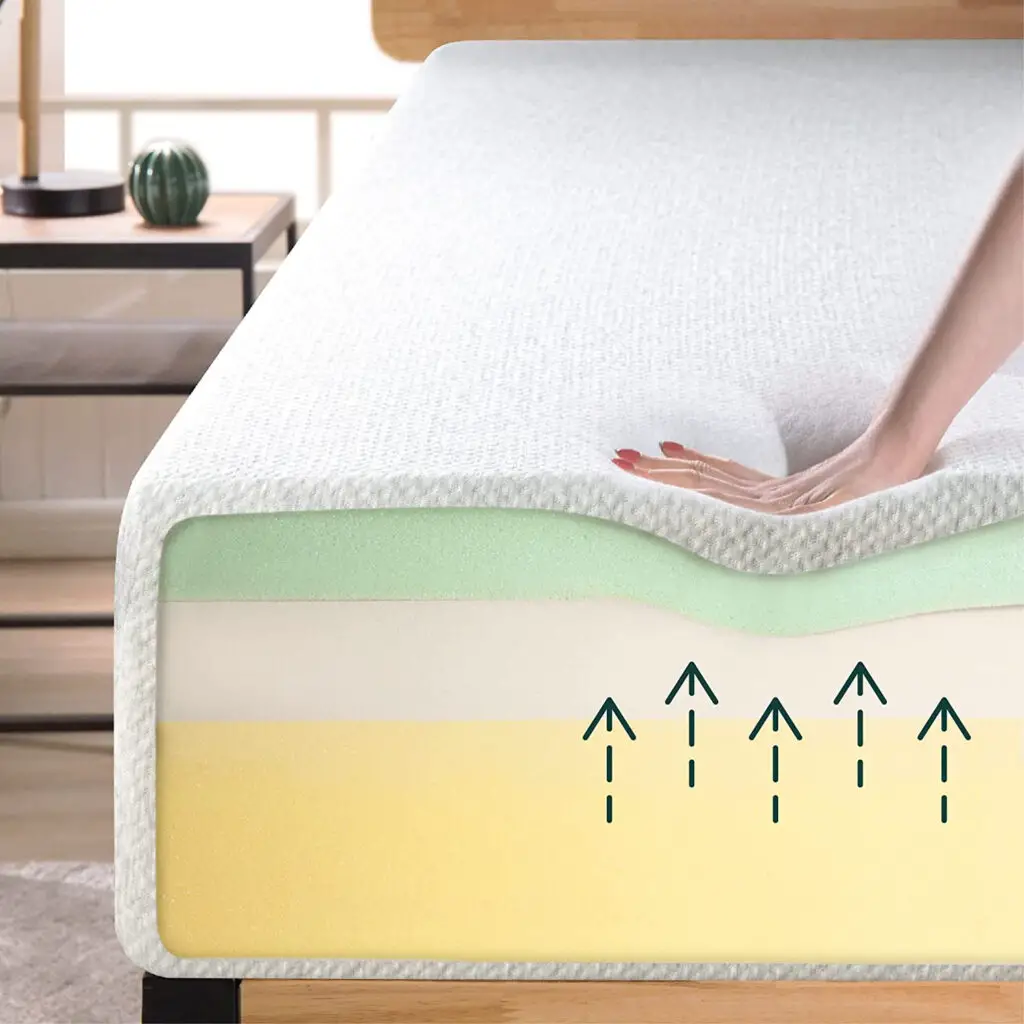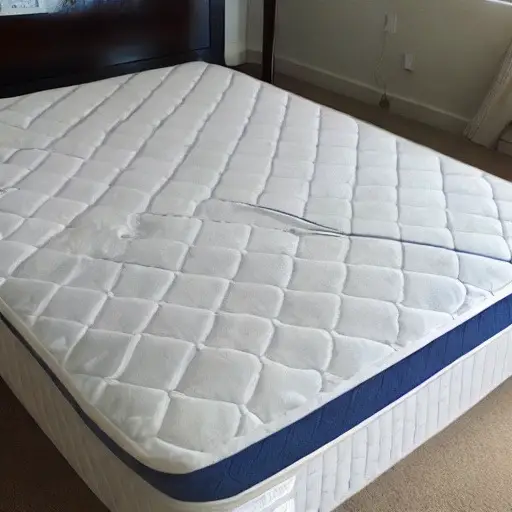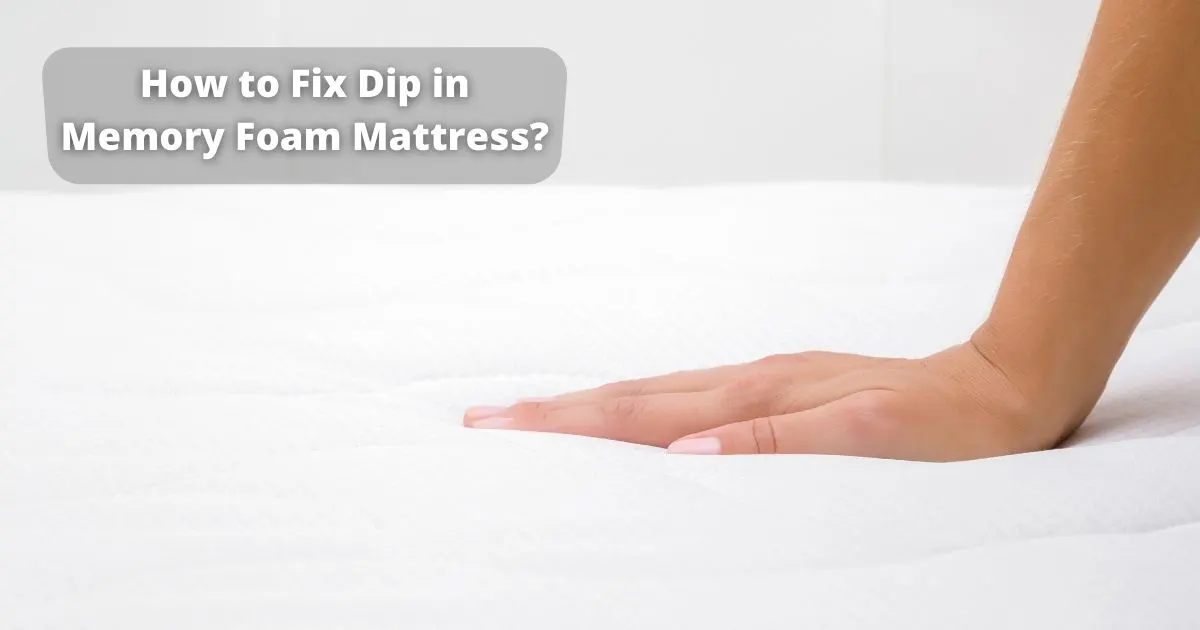Memory foam mattresses are a popular choice for many people due to their ability to conform to the shape of the body and provide pressure relief.
However, over time, these mattresses can develop dips or indentations, causing discomfort and disrupting sleep.So,
How to Fix Dip in Memory Foam Mattress?
Fortunately, there are several methods that can be used to fix dips in memory foam mattresses.One common cause of dips in memory foam mattresses is the breakdown of the foam over time. This can be caused by the weight of the sleeper, as well as exposure to heat and moisture. Another factor that can contribute to dips is the use of an improper foundation or bed frame. If the mattress is not properly supported, it can sag and develop indentations.
If you are experiencing dips in your memory foam mattress, there are several steps you can take to fix the problem.
These include rotating the mattress regularly, using a mattress topper or pad, and adjusting the support system.
With the right approach, it is possible to restore your mattress to its original comfort and support, ensuring a better night’s sleep.
Assessing the Dip:
When it comes to fixing a dip in a memory foam mattress, the first step is to assess the severity of the dip.
This will help determine the best course of action to take.
Locating the Dip:
The first step in assessing the dip is to locate it.
This can be done by visually inspecting the mattress for any visible indentations or depressions.
It is important to note that the dip may not always be visible, especially if it is located in the middle of the mattress.
In this case, it may be necessary to lie on the mattress and feel for any areas that feel softer or more compressed than the surrounding areas.
Measuring the Depth of the Dip:
Once the dip has been located, the next step is to measure its depth. This can be done using a ruler or tape measure.
Place the measuring tool at the deepest point of the dip and measure the distance from the top of the mattress to the bottom of the dip.
This measurement will be important later on when determining the best course of action to take to fix the dip.
It is important to note that dips in memory foam mattresses can be caused by a variety of factors, including the quality of the foam, the weight of the sleeper, and the age of the mattress.
In some cases, the dip may be too severe to be fixed and a replacement mattress may be necessary.
However, in many cases, the dip can be fixed with some simple adjustments or repairs.
Overall, assessing the dip in a memory foam mattress is an important first step in fixing the problem.
By locating the dip and measuring its depth, sleepers can determine the best course of action to take to ensure a comfortable and supportive sleeping surface.
Fixing the Dip:
If you have a dip in your memory foam mattress, don’t worry, there are several things you can do to fix it.
Here are some methods to consider:
Rotating the Mattress:
One of the easiest things you can do to fix a dip in your memory foam mattress is to rotate it.
If you sleep in the same spot every night, the foam in that area can compress and create a dip.
By rotating the mattress, you can distribute the weight more evenly and help the foam recover its shape.
To rotate the mattress, simply turn it 180 degrees.
If you have a two-sided mattress, you can also flip it over.
Keep in mind that you should rotate your mattress every three to six months to prevent sagging and extend its lifespan.

Placing a Plywood Board Underneath the Mattress:
If rotating the mattress doesn’t work, you can try placing a plywood board underneath it.
A plywood board can help support the mattress and prevent it from sinking in too much.
To use a plywood board, place it between the mattress and the box spring or bed frame.
Make sure the board is the same size as the mattress and is smooth and free of splinters.
Using a Mattress Topper:
Another option is to use a mattress topper.
A mattress topper is a layer of padding that goes on top of your mattress. It can help even out the surface and provide extra cushioning.
When choosing a mattress topper, look for one that is made of high-density foam or latex.
These materials are more durable and can provide better support. You can also choose a topper with a thicker density to provide more cushioning.
Replacing the Mattress:
If none of the above methods work, it may be time to replace your mattress. Memory foam mattresses typically last between seven and ten years.
If your mattress is older than that, it may be time for a new one.
When choosing a new mattress, look for one that is made of high-quality materials and has a good warranty.
Also, make sure the mattress is the right firmness for your sleeping position and preferences.
Remember, fixing a dip in your memory foam mattress may take some trial and error.
Try these methods in order, starting with the easiest and least expensive options first.
With a little patience and persistence, you can get your mattress back to its original shape and enjoy a good night’s sleep again.
Why Does a Memory Foam Mattress Sag?(Reasons!)

There are several reasons why a memory foam mattress may sag over time.
Here are some of the most common reasons:
- Normal wear and tear: Over time, any mattress will experience normal wear and tear. This can cause the foam to break down and lose its shape, leading to sagging.
- Poor quality foam: Not all memory foam is created equal. Lower quality foam may be more prone to sagging and may not have the same durability as higher quality foam.
- Heat and humidity: Memory foam is sensitive to temperature and humidity. Exposure to heat and humidity can cause the foam to soften and lose its shape, leading to sagging.
- Heavy weight: Memory foam is designed to contour to the shape of your body, but excessive weight can cause the foam to compress and lose its shape over time.
- Lack of support: Memory foam mattresses need to be supported properly to prevent sagging. If the mattress is placed on an inadequate foundation or has insufficient support, it may sag over time.
- Improper care: Improper care and maintenance of a memory foam mattress can also cause sagging. This includes using the wrong cleaning products or failing to rotate the mattress regularly.
It’s worth noting that some degree of sagging or softening is normal for any mattress over time, and memory foam is no exception.
However, if the sagging is causing discomfort or interfering with your sleep, it may be time to consider replacing the mattress or taking steps to address the issue, such as rotating the mattress or adding additional support.
How to Fix Dip in Memory Foam Mattress?(Step By Step!)
Here are the steps to fix a dip in a memory foam mattress:
Step 1: Remove all bedding – Remove all bedding from the mattress so that you can see the entire surface.
Step 2: Rotate the mattress – Rotate the mattress 180 degrees so that the dip is now on the opposite side of the bed.
Step 3: Add support – Place a piece of plywood or a similar firm material under the mattress where the dip is located. This will help to provide additional support to the area and prevent it from sinking further.
Step 4: Use a mattress topper – Consider using a mattress topper to help even out the surface of the mattress. A topper made of memory foam or latex can be particularly effective at providing additional support and comfort.
Step 5: Allow time for the mattress to adjust – Give the mattress some time to adjust to the changes you’ve made. It may take a few days for the mattress to fully adjust to the new support and even out.
If you find that these steps do not fix the dip in your memory foam mattress, it may be time to consider purchasing a new mattress.
Is it normal for memory foam mattress to dip?

It is not uncommon for a memory foam mattress to develop a dip over time.
This can happen due to the weight of the sleeper compressing the foam in certain areas.
Memory foam is designed to contour to the shape of your body, which can create a personalized sleep surface that provides excellent support and comfort.
However, this contouring can also lead to the development of dips or indentations in the mattress over time.
Factors that can contribute to the development of dips in a memory foam mattress include the weight of the sleeper, the quality of the foam, and the age of the mattress.
Heavier individuals may be more likely to experience dips in their mattress due to the increased pressure on the foam.
Lower quality foam may also be more prone to developing dips, as it may not have the same durability and resilience as higher quality foam.
It’s worth noting that some degree of sagging or softening is normal for any mattress over time, and memory foam is no exception.
However, if the dip in your mattress is causing discomfort or interfering with your sleep, it may be time to consider replacing the mattress or taking steps to address the issue, such as rotating the mattress or adding additional support.
How do you get memory foam back to its shape?
Some steps to get memory foam back to its shape:
| Step | Description |
|---|---|
| 1 | Remove any bedding or covers from the memory foam. |
| 2 | Allow the memory foam to air out in a well-ventilated room for several hours. This will help to remove any odors and allow the foam to expand back to its original shape. |
| 3 | Use a handheld vacuum or a vacuum cleaner with a soft brush attachment to gently remove any surface debris or dust from the memory foam. |
| 4 | Apply pressure to the areas of the memory foam that have lost their shape. This can be done by using your hands to press and knead the foam, or by using a rolling pin or similar object to roll over the foam and help it regain its shape. |
| 5 | If the memory foam has deep indentations or dips, consider using a hair dryer on a low heat setting to gently warm the foam. This can help to soften the foam and allow it to expand back to its original shape. |
| 6 | Allow the memory foam to rest undisturbed for several hours to allow it to fully expand and regain its shape. |
| 7 | If necessary, repeat the above steps until the memory foam has fully regained its shape and firmness. |
It’s worth noting that memory foam may take some time to fully expand and regain its shape, so it’s important to be patient and allow the foam enough time to recover.
Conclusion: How to Fix Dip in Memory Foam Mattress?
In conclusion, there are several steps you can take to fix a dip in a memory foam mattress:
- Remove all bedding from the mattress and rotate it 180 degrees so that the dip is on the opposite side of the bed.
- Place a piece of plywood or a similar firm material under the mattress where the dip is located to provide additional support.
- Consider using a mattress topper made of memory foam or latex to help even out the surface of the mattress.
- Allow time for the mattress to adjust to the changes you’ve made, as it may take a few days for the mattress to fully adjust to the new support and even out.
If these steps do not fix the dip in your memory foam mattress, it may be time to consider purchasing a new mattress.
It’s important to keep in mind that some degree of sagging or softening is normal for any mattress over time, but if the sagging is causing discomfort or interfering with your sleep, it’s worth taking steps to address the issue.

